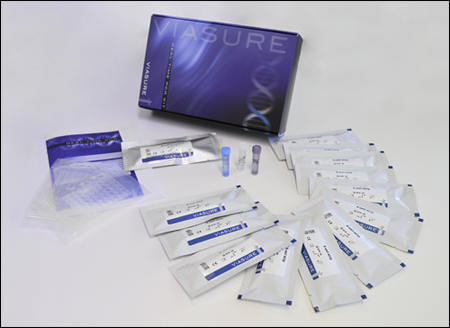
VIASURE Real Time PCR Detection Kits
Salmonella, Campylobacter & Shigella/EIEC

Description
VIASURE Salmonella, Campylobacter & Shigella/EIEC Real Time PCR Detection Kit is designed for specific detection and differentiation of Salmonella, Campylobacter and Shigella/enteroinvasive Escherichia coli (EIEC) in human stool samples from patients with signs and symptoms of gastrointestinal infection.
This test is intended for use as an aid in the diagnosis of the Salmonella, Campylobacter and/or Shigella/EIEC in combination with clinical and epidemiological risk factors.
DNA is extracted from stool specimens, multiplied using Real Time amplification and detected using specific primers and a fluorescent reporter dye probe for Salmonella, Campylobacter and/or Shigella/EIEC.
Specifications
Information
The Salmonella genus is divided taxonomically into six Salmonella enterica subspecies and Salmonella bongori. Salmonella causes two types of diseases: enteric (typhoid) fever and acute gastroenteritis commonly referred to as salmonellosis. Transmission of Salmonella occurs through contaminated food (poultry, poultry products, beef, pork, eggs, milk, and seafood), water or contact with infected animals. Patients infected with Salmonella frequently suffer nausea, vomiting, abdominal cramps/pains, achiness, fever, intense diarrhea and/or headache.
The Campylobacter genus consists of 26 species, 2 provisional species, and 9 subspecies. The most common species of Campylobacter associated with human illness are C. jejuni and C. coli, but other species can also cause human infections. Poultry is a major reservoir and source of transmission of Campylobacter to humans. Other risk factors include consumption of animal products and water, contact with animals, and even person-to-person transmission (fecal-oral or via fomites). Infection with Campylobacter causes gastroenteritis characterised by fever, vomiting, headaches, and abdominal pain with watery or bloody diarrhea, for a median duration of 6 days.
Shigellosis is a dysentery characterized by severely bloody and mucus-containing diarrhea. The disease is caused by any of the four species of Shigella (S. dysenteriae, S. flexneri, S. boydii and S. sonnei) and by enteroinvasive Escherichia coli (EIEC). The differentiation of Shigella and enteroinvasive E. coli is complicated due to the ability to cause dysentery using of the same method of invasion. Shigella is a significant agent of foodborne illness, especially with foods that require hand processing and/or are prepared from raw or previously cooked products without re-heating.
Target genes most frequently employed for rapid detection and identification of Salmonella, Campylobacter and Shigella/EIEC using Real Time PCR assays are the virulence invA gene (Salmonella invasion protein gene), 16S rRNA gene and ipaH gene, respectively.

